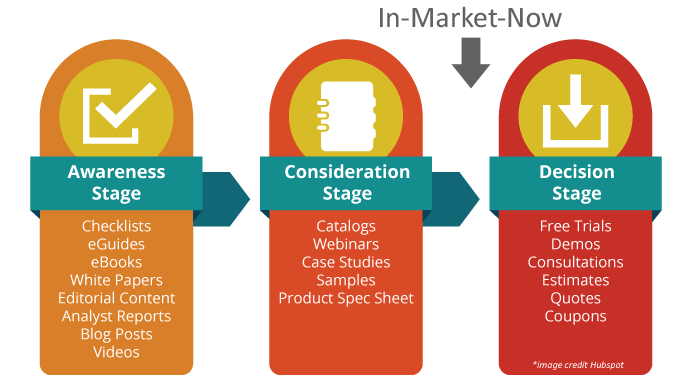YOUR BIGGEST BOTTLENECK IS
DRIVING QUALITY PROSPECTS
22% of Survey Respondents Indicate Driving Quality Prospects is Their Biggest Challenge
Driving quality prospects is a universal challenge for paid search marketers across all industries. Between campaign structure, targeting options, search noise and other factors how do you make sure you are spending money getting in front of the prospects looking for your product or service today?
There is no short answer to this question, but there are some best practices you can deploy to be sure that you are targeting prospects at the right spot in the buyers journey and gaining more control over where your dollars are spent.
“We often think of prospect quality as an aspect of marketing and outreach. The truth is, a lot can be impacted by our sales process, tracking ability and other aspects of our business. It’s important to start on the front end, but you can’t stop there.”
The Buyers Journey
The beauty of paid search marketing is that it is what I call “Intent Marketing” and not demographic marketing. On a platform like Facebook we can target someone that looks like they fit our definition of a prospect. The problem is we have no idea if they actually are a prospect and have no indication of if, or when, they will be in-market for our product or service.
With intent marketing we cannot single out those that fit our profile of a prospect, but we can target prospects that are in-market-now based off the language they use in their search.
One of the biggest mistakes I see paid search marketers make is the keywords and match types they use are targeting prospects in the wrong spot in the buyer’s journey, or the wrong prospects altogether.
Let’s re-familiarize ourselves with the buyer’s journey, laid out here in graphical form. (image credit to Hubspot)

Ask yourself, what is the difference between someone searching for ‘cleaning carpets’ versus ‘carpet cleaning company’? I would argue the first is looking for some self help, and the second is looking for a service provider.
What about someone searching for ‘microsoft sharepoint’ versus ‘microsoft sharepoint services’? The former is in the awareness stage of researching a potential solution or general information, and the latter indicates a prospect looking for outside help.
In order to get in front of in-market-now prospects you need to be targeting your keywords between the consideration and decision stage of the buyer’s journey. Only when you have exhausted all keywords in this stage do you move back between the awareness and consideration stage for an incremental lift.
In addition to the keyword qualifiers you use in your phrases to target the proper spot in the buyer’s journey, your keyword match types will have an effect here as well.
In most cases the more restrictive your match type the more relevant the searches Google will match you up with. In practical terms this means staying away from broad match as much as possible. Any broad match keywords used must prove they are a valuable contributor, to the point that I often isolate them in a separate campaign for better tracking.
Exact match, phrase match and modified broad match are the search types that should bring the best results. Be sure to continuously monitor what Google is matching them up with and adjust as necessary to be sure you have the best performing mix of match types in your campaign.
Using these strategies will help you get in front of the prospects that show the proper intent, and limit your wasted spend by Google matching your targeted terms up too loosely.
Maximizing Your Budget
Now that we are getting in front of the right prospects, we want maximize our budget on the best performing keyword sets. Accomplish this by breaking off groups of keywords that perform well and limit most of your campaigns to one ad group per.
Google requires users to set the budget at the campaign level. As a result you cannot specify which ad group gets what percentage of the campaign’s budget. Limiting to one ad group per campaign now provides you with a mechanism to apply more budget to the keywords that perform well, and less on those that need improvement.
Where Do I Go From Here?
What we’ve covered here is the just the tip of the iceberg. If you are looking for more detailed strategies for driving quality prospects consider purchasing our affordable advanced guides.Each is chock full of the tips, tricks and strategies we employ to build successful programs for clients all over the country. Take the lessons we’ve learned and put them into practice to bring your paid search marketing program to the next level.
Think you might need more help? Why not reach out for a consultation with our resident paid search marketing consultants so we can review your specific needs and challenges and provide the solutions you need to move forward.
It is possible to solve your prospect quality issue, and we are happy to help any way we can.
As a onetime special, we are offering you 25% off of any of our advanced guides if you make your purchase in the next 5 days. Simply use coupon code DIAGNOSTIC25 during checkout.
Solving your prospect quality issue should be your biggest priority and I hope we’ve helped set you on a path to success.
READY TO START THE CONVERSATION?
CONTACT US
Schedule a free, no obligation consultation with our friendly marketing team.
